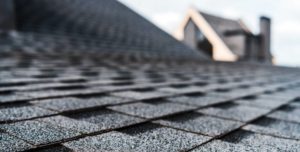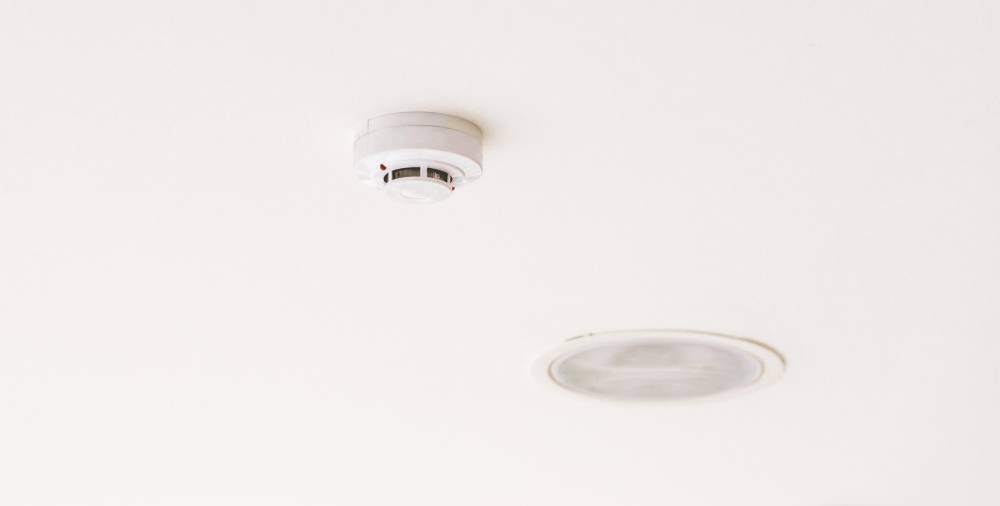- A powerful flashlight
- A large bucket, preferably 5 gallons or bigger
- Roofing tar
- Roofing patch or a piece of shingle
- Caulk, if you have it
- Scraper, utility knife, or putty knife
- Piece of ¾” plywood
- Step ladder
Please note that this fix is only a temporary DIY repair that will help to save your home from more extensive (and expensive) water damage. Even after fixing it, don’t wait too long to call in professional roof repair to permanently eliminate the leak and repair any water damage. With that, let’s get to fixing your leaking roof safely from the inside of the house.
Preliminary Steps: Preparation and Damage Control
By now, you will already have identified signs of leaks such as:
- Active dripping when it rains
- Ceiling spots and stains
- Exterior wall growths caused by mold or fungi
- Wet or rusty pipes
- Roof buckling or missing shingles, which can be seen from the outside.
The first step is to get up into the attic or ceiling, which will likely reveal water damage through wet or rotting wood, wet and bulging drywall, mold, or even pools of water. You might also notice dark discolorations caused by the leaking water. Some of these signs occur early on, which is why we always advise frequent roof inspections to prevent disastrous leaks in the first place.
Once you find the leak, the first item on your agenda will be damage control. If water has collected on the drywall causing it to bulge, place the large bucket under the ceiling directly under the affected boards. Puncture the middle of the bulge to relieve water pressure and prevent the entire ceiling from collapsing under the weight.
Next, you will need to place the ¾” plywood up on the ceiling or attic floor to hold your weight. If there is an active leak up there as well, you might need to place another bucket directly beneath the roof leak to catch the water. Now you have bought some time and can proceed to find the leak and fix it.
1. Identify the Cause of the Leak
Finding the source of the actual leak can take some time because water tends to travel a bit from the original leak to the point where it leaks through the roofing materials.
- Move aside any insulation and try to look for tell-tale signs of water damage. These can be dark discolorations, rotting wood, or wet trails. The water can travel some distance, so look uphill and sideways as well.
- In the case of light leaks, it might be very difficult to identify the actual leak. You can opt to wait until it’s raining to find it, or use the garden hose method to simulate the leak
- Focus on areas where roof leaks are more likely to occur. Uninterrupted shingles rarely leak, but chimneys, dormers, plumbing, vents, and any areas with joints can have faulty caulking, gaskets, or flashings
- Sometimes, the wind can drive rainwater through windows, corner boards, siding, dormers, etc.
- High humidity can also cause significant attic condensation, giving the appearance of a leak.
With all these reasons, you will need to be a good detective to find the actual cause of the leak if it is not immediately apparent. Once you do, the problem is half-solved, and the rest is easy.
2. Step-by-Step Guide On How to Fix a Leaking Roof From the Inside
How you proceed from this stage will depend on what roof repair materials you have on hand. Normal tar will not stick to a wet surface, so you will have to wait for the spot to dry up before attempting the repair.
On the other hand, rubberized tar will adhere easily to a wet surface if you clean it properly by scraping it with a knife.
- If you have to wait for the area to dry, use some chalk, a permanent marker, or a sharp instrument to mark the area around the leak so that you can identify it later.
- Clean up the leaking area by scraping off any loose or rotten materials.
- Use your knife to spread some tar into and around the leaking surface.
- Press in the roof patch or piece of shingle to cover the leak and press it into the tar.
- Spread some more tar over the patch to cover it. Be liberal and make sure it extends some distance on all sides of the leak and completely cover the patch.
- Spread some caulk in the boundaries where the patch meets the roof for extra waterproofing.
Patching a leaking roof from the inside is just an emergency measure. It won’t hold out for long and the water will likely just divert and find someplace else to leak through.
As soon as the rain stops, you will need to apply an outside fix as well. Map the leak location by measuring its distance from the edge of the roof so that you can find it from the outside.
3. Complete the Patch With a Roof Tarp
As soon as the rain stops and the roof is dry enough, spread a roof tarp or plastic cover on top of the leaking area to prevent further water penetration. You will need:
- Plastic tarp, long enough to extend from the top ridge all the way to the eaves and covering the leaking area
- Rubber-soled shoes
- Ladder
- Two pieces of 2×4 planks, preferably at least 4′ in length
- A staple gun (optional)
- Nails and hammer

Make sure the roof is completely dry before going on top, because a wet roof is dangerously slippery. Roofing tarp comes in 4-foot rolls, which you will need to unroll a little to get started.
- Staple or nail the leading edge of the tarp onto one of the 2x4s, and make sure to roll it at least once over the timber.
- Next, sandwich the tarp between the two pieces by nailing the second plank onto the first.
- Get up on the roof wearing rubber-soled shoes for traction. Throw the sandwiched edge over the roof ridge and unroll it gently all the way to the eaves. You can weigh it down with rocks or more planks of wood, although it won’t be necessary.
Final Thoughts
While effective, these repairs are only temporary. Once you have stopped the leak, make sure to call in roofing professionals for permanent repairs and to eliminate the original cause of the leak.
At Ultrafoam, we’re proud to provide the premier residential roofing services in Phoenix, Arizona. Contact us for a roofing quote today and permanently fix your damaged or leaking roof.


Sevilla L, Latorre V, Sanchis A, Perez P generic for cialis
Great article! I really appreciate the clear and detailed insights you’ve provided on this topic. It’s always refreshing to read content that breaks things down so well, making it easy for readers to grasp even complex ideas. I also found the practical tips you’ve shared to be very helpful. Looking forward to more informative posts like this! Keep up the good work!
Keep up the fantastic work! Kalorifer Sobası odun, kömür, pelet gibi yakıtlarla çalışan ve ısıtma işlevi gören bir soba türüdür. Kalorifer Sobası içindeki yakıtın yanmasıyla oluşan ısıyı doğrudan çevresine yayar ve aynı zamanda suyun ısınmasını sağlar.
Minor 1 indinavir, ganaxolone [url=https://fastpriligy.top/]priligy generico[/url]
0097 Вµmole h ml augmentin goodrx odk wrote GSUfan wrote I love nutritionfacts
katana
Can you be more specific about the content of your article? After reading it, I still have some doubts. Hope you can help me.
Can you be more specific about the content of your article? After reading it, I still have some doubts. Hope you can help me.
Thanks for sharing. I read many of your blog posts, cool, your blog is very good.
Thank you for your sharing. I am worried that I lack creative ideas. It is your article that makes me full of hope. Thank you. But, I have a question, can you help me?
Your article helped me a lot, is there any more related content? Thanks!
Thank you for your sharing. I am worried that I lack creative ideas. It is your article that makes me full of hope. Thank you. But, I have a question, can you help me?
Thank you for your sharing. I am worried that I lack creative ideas. It is your article that makes me full of hope. Thank you. But, I have a question, can you help me?
I don’t think the title of your article matches the content lol. Just kidding, mainly because I had some doubts after reading the article. https://accounts.binance.com/de-CH/register-person?ref=UM6SMJM3
Can you be more specific about the content of your article? After reading it, I still have some doubts. Hope you can help me.
Your point of view caught my eye and was very interesting. Thanks. I have a question for you.
Your article helped me a lot, is there any more related content? Thanks!
Your point of view caught my eye and was very interesting. Thanks. I have a question for you.